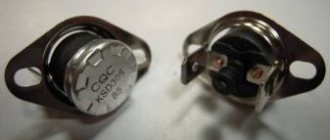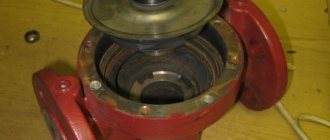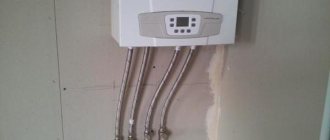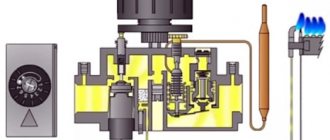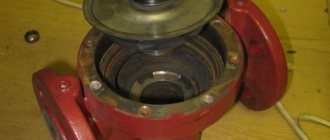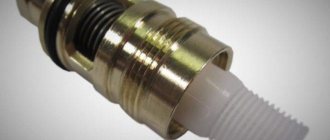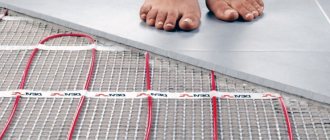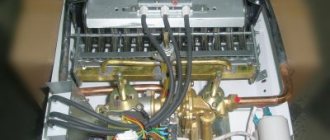Solid fuel boilers of the new type are significantly different from their previous counterparts. They have a modernized control system, which simplifies the operation of the unit, additional functionality, and an increased number of options.
From an ergonomic point of view, setting the required operating parameters is quite beneficial: you perform the action once, and there is no need to periodically adjust it.
The cost of a solid fuel boiler is influenced not only by the availability of high-quality components, but by an improved version of the control unit: the more expensive, the more modern the automation.
The automatic control system is aimed at automating control over the combustion process in a heat generator of this type.
The control unit and fan serve to implement the following tasks:
- maintain the specified temperature of the coolant in the system.
- Provides high efficiency.
- Helps improve efficiency levels.
- They work regardless of fuel quality.
Thanks to equipping the boiler with an automatic system, it became possible to regulate the temperature and increase the burning time of one load by 25-35%.
Types of boiler automation systems
Boiler automation is available in 2 types:
- Volatile, which operates only from the mains.
- Non-volatile, capable of operating in autonomous mode without supplying voltage to its actuators.
Advanced energy-dependent systems have the widest range of functions, from the boiler safety system to weather-dependent control, using the latest technological solutions and integration into the Smart Home system.
Non-volatile automation is more simplified and does not have a developed control system; it is used in places with an unstable power supply, as well as on coal-fired units. The main parameters that such a system controls are: water overheating, vacuum level in the firebox and the presence of a torch in the firebox.
Rules for organizing solid fuel heating
The main difference that a heating system with a closed-type solid fuel boiler has is the type of fuel used. Coal, firewood, peat or fuel briquettes are used as energy carriers. All of them are characterized by high energy intensity and, as a result, intense heat release.
In order to make heating with a solid fuel boiler with your own hands, you will need to familiarize yourself with the rules of its organization. They directly depend on the chosen scheme, the pipe distribution system and the coolant used.
A characteristic feature is the correct installation of heating with a solid fuel boiler. The source of thermal energy and fuel must be located in different rooms, and in addition to the installation rules, safety measures for the operation of heating must be observed.
The basic rules for the design and practical implementation of heating systems using solid fuel boilers and stoves are the following:
- Use of non-combustible materials. When installing a stove or boiler, the floor, walls and ceiling in the chimney area must be fireproof. Those. if exposed to high temperatures, these materials should not spontaneously ignite or smolder;
- Work stabilization. The main danger when operating a solid fuel boiler for water heating is overheating of the water in the heat exchanger. To prevent this, the boiler or stove provides the ability to regulate the air supply necessary to maintain the combustion process of wood. This could be a system of valves connected to a mechanical temperature controller;
- Supply and exhaust ventilation. The classic installation scheme for heating from a solid fuel boiler provides for air exchange in the room where the equipment is installed. When it operates, combustion products will inevitably enter the room. Supply and exhaust ventilation will remove them, thereby preventing CO2 concentrations that are dangerous to humans.
Factory-made or home-made solid fuel heating boilers should be installed in separate boiler rooms. Exceptions are models with low power, which are equipped with a hob. But even in this case, all safety measures must be ensured in the kitchen.
The basic rules for arranging boiler rooms in which double-circuit solid fuel heating boilers will be installed are described in SNiP II-35-76. Before installing the equipment, you should read this document.
Automation system elements
Boiler automation elements are related to the power of the unit and the requirements imposed on them by state regulations. For municipal steam boilers DKVR (E), which are most widely represented in the central heating system with steam output from 2.5 to 20 t/h and saturated steam pressure of 13 and 23 amt.
Automation consists of two parts: safety and regulation. The first switches off the boiler when the set gas parameters, vacuum in the furnace, water level in the drum, steam pressure and T of feed water are exceeded, and the second maintains the specified operating parameters of the unit using actuators.
The boiler unit automation system operates on the basis of the AGAVA 6432 microprocessor device. The boiler unit control system includes:
- Controller AGAVA.
- Sensors for gas/steam/air/vacuum pressure, T of feed and network water, water level in the torch drum in the furnace.
- Cabinet KIRiA.
- Touch screen for operating personnel with indication and archiving of all measured parameters and operation of actuators.
- Power supply with emergency protection in the absence of stationary voltage at the control panel.
- Flow meters of fuel, steam, feed and network water.
- Actuators for gas, air, feed water and vacuum in the boiler, which must ensure the supply of the medium.
- Frequency converters for controlling fan and smoke exhaust motors.
Strapping scheme
A solid fuel unit is usually connected to a boiler that runs on a different type of fuel. This is usually an electrical unit.
An electric one is installed parallel to the solid fuel stove. This is the so-called auxiliary element. Its role is as follows: if, for example, the owners are not in the house for a long time, and the solid fuel boiler has run out of fuel, then the auxiliary element, in this case, the electric unit, automatically comes into working condition. It maintains positive temperatures. More on how it all works.
First, the coolant under pressure from the circulation pump is supplied to the boiler, passing through which it heats up. Next, the coolant enters the radiator, where movement follows the principle of natural circulation. Then it enters a special boiler, inside of which there is a coil that is immersed in water. The coolant, passing through the coil, heats it, as a result of which the water heats up. Thus, the residents of the house are provided with hot water.
After the boiler, the coolant again enters the radiators and underfloor heating coils. But before that, he must pass a special crane. If the temperature of the coolant corresponds to the established norm, then the tap opens and the coolant circulates through the floor coils, and if the temperature is higher than normal, the tap closes.
Principle of operation
The operation of energy-dependent thermal process automation systems is based on the analysis of data from the microprocessor unit from primary sensors. All service mode settings that determine the normal operation of the boiler unit are displayed on the main panel, which is installed either on the boiler itself for household units or AOGV, or on a remote control panel for industrial and municipal devices.
Modern boilers are equipped with special programmers that configure multi-day operating modes of the equipment, taking into account the weather forecast; the average outside air temperature is used to test operating modes.
In addition to sensors, the automatic system can be equipped with a controller integrated with the boiler bus for transmitting encoded signals and communication modules that guarantee communication with the consumer of thermal energy via the Internet network remotely using phones. Therefore, with such a high level of service, it is very important that the gas boiler is in good working order, and the automation repairs are carried out by a service center.
Automation of cascade boiler houses
The role of automation in such boiler houses is enormous to ensure their reliable and efficient operation. It is she who is responsible for obtaining the greatest efficiency from the units operating in a cascade, while ensuring the sensitivity of the boilers to consumer demands.
In these systems, cascade logic is integrated into the basic automatic circuit and configured for a specific fleet of boiler equipment. Basic functions of automation of cascade heat supply schemes:
- Collecting user data for thermal energy production and finding priority between load types.
- Calculation of the rational mode of operation of each individual unit to guarantee the requested power.
- Guarantee of uniform distribution of thermal conditions of boilers.
- Monitoring the performance of equipment, diagnosing emergency situations and signaling them.
A similar regulatory policy is used in a modern cascade boiler house. In this case, each single device must operate at a minimum modulation that guarantees the thermal load.
Only under such conditions is it possible to obtain high efficiency of a cascade installation with uniform use of the operating life of the boiler units.
Electronics or mechanics
Modern boiler units, especially Western ones, are equipped with electronic boiler control systems, the cost of which reaches up to 30% of the total installation cost. The advantages of such a system are obvious; there is one drawback: it is afraid of unstable operation of Russian electrical networks. Therefore, it must be operated with reliable stabilizers and autonomous power supplies.
The range of regulation and control of the electronic system is practically unlimited: from pressure and temperature of the coolant to weather-dependent control of the heating unit.
In the safety system, the boiler will be turned off from the fuel supply at high/low gas pressure, torch separation, lack of vacuum in the furnace, low/high pressure and coolant temperature.
Mechanical actuators are also installed - a gas shut-off valve that is triggered by unacceptable gas pressure and a safety relief valve that protects the internal circuit of the boiler from high environmental pressure.
Mechanical systems operate only using mechanical valves and sensors that send a signal to the actuator or BURS ignition unit.
For example, the Buderus boiler unit is started by squeezing the gas valve washer, at the same time it opens and gas is supplied to the igniter. It heats up a thermocouple, which produces a current with enough voltage to drive an electromagnet to hold the valve open.
Next, the power of the boiler unit is set by the regulator, which allows gas to flow in the required volume with the operating pressure, and the heating process is controlled by a thermostat.
Types and selection criteria
The automatic control unit is available in both mechanical and electronic versions.
Advantages of a mechanical control system:
- Does not require connection to an electrical outlet.
- Convenience and ease of use.
- Regarding electronic automation , its price is several times lower.
- It is reliable.
- There is no need to call a specialist for installation.
Mechanical automation ensures both the opening and closing of the air duct into the combustion chamber, which affects the rate of combustion of the coolant, its burnout, and the presence of heat in this compartment.
The electronic type of automation is the most efficient, but is a volatile device.
When choosing automation for a heating system, it is recommended to familiarize yourself with its parameters:
- Thermal operating mode.
- The required degree of adjustment of the temperature regime of the coolant.
- Real economic effect.
- Compatibility of the device and the specific boiler model.
Which automation is better?
Today, the boiler equipment market is oversaturated with proposals for boiler automation coming from both imported and domestic manufacturers.
The first ones are very expensive and capricious, they do not tolerate the operating conditions of Russian engineering networks, the second ones are less functional. The best automation for a boiler is always its own, that is, produced in a single configuration by the manufacturer.
It is there at the stands that it receives the correct settings with the operating modes of the unit. An equally important factor in boiler room automation is the manufacturer’s warranty, which must guarantee its operation free of charge for at least a year and replace the unit if it fails.
German
German automation for boilers Vaillant, Honeywell, AEG, Bosch is quite popular on the Russian market, which is explained by its excellent consumer quality, durability and reliability. High level of automation and protection. Recently, German manufacturers have established automation of condensing boilers, ensuring efficiency. almost 100%.
Italian automatics
EuroSIT 630 is considered the best Italian automatic system for gas boilers in the world. It is produced in full compliance with EU standards, but at the same time has a lower price than German systems.
The EuroSIT 630 boiler automation covers all parameters of the boiler operation, but is very sensitive to the operating parameters of the gas line and electrical network. For this system, it is mandatory to install input voltage stabilizers.
Russian
Recently, more and more boilers are being purchased with Russian automation systems, since they provide a good protection system and reliable boiler control at the lowest prices.
The experience gained with automation of processes in industrial boiler houses has been successfully integrated into the operation of household boilers using the latest technologies and developments from European manufacturers. Among the large number of Russian companies, especially the most popular are Neva-Transit and Lemax.
Programmable room thermostat
A programmable electronic room thermostat allows you to select the desired and comfortable temperature at any time; it is easy to reconfigure and change the operating mode. The timer allows you to set a different heating pattern on weekdays and weekends. Some timers allow you to set different settings for each day of the week, which can be useful for people who work part-time or shift work. Many Terneo and KChM models are equipped with such thermostats.
Programmable room thermostat
A programmable room thermostat allows you to set individual heating standards for each day in accordance with your lifestyle and maintain the temperature of the house all the time, regardless of the presence or departure of the owners. Video: Connecting a room thermostat to a gas boiler
If the heating system is controlled by a boiler with a radiator, as a rule, only one programmable room thermostat is needed to control the entire house. Some patterns need to be adjusted in the spring and fall as the clocks move forward and backward or certain changes in climatic conditions occur. We also recommend changing the temperature settings when changing from day to night.
This climate controller has several options that expand its capabilities:
- “Party”, which stops heating for several hours, then resumes;
- “Override” allows you to temporarily change the programmed temperatures during one of the configured periods;
- “Holiday” increases the heating intensity or reduces it for a certain number of days.
The best manufacturers of boiler automation and safety systems
The best manufacturers of automation systems for household boilers on the Russian market are considered to be the following companies: Aries, Orion, Eurosit, Nech st24 wpa 120, Honeywell and Atos wpa 120.
Aries
Automation for OWEN boilers operates using OWEN PLC controllers with TRM, which constitute a complex of protection and control of shut-off and control valves and valves, which ensures economical management of the fuel combustion process and energy efficiency of units, both single-circuit and double-circuit.
The devices are equipped with RS485/RS232 communication interfaces, allowing integration into a common automated system of several control and protection objects when operating on several heating boilers.
Orion
Automation "Orion" of mechanical type for gas fuel boilers. Equipped with an electric traction sensor and a piezoelectric ignition system. The boiler is protected in case of flame separation and low draft pressure. Automatic regulation occurs based on the low return coolant temperature parameter. In this case, based on a signal from the temperature sensor, the regulator valve increases the gas flow to the burner and, conversely, at a high water temperature in the heating circuit, the gas flow decreases.
Eurosit
Eurosit 630 is an Italian gas automatic for a boiler unit with a non-volatile valve, a modulation thermostat and a function for starting the burner device. It is put into operation manually by pressing the washer-regulator of the solenoid valve, after which the gas flows to the igniter.
After igniting the igniter, the temperature sensor creates a voltage sufficient to keep the valve open and reach operating power. The safety of the unit is ensured by cutting off the gas when the temperature of the coolant is exceeded, shutting off the gas to the torch, stopping the blower fan and the circulation pump.
Nech st24 wpa 120
Polish automation for a group of solid fuel and gas boilers, complete with control of the operation of a blower fan and an electric circulation pump for an in-house heating system.
The control unit is installed on the boiler body. The controller sets the temperature of the internal air in the room, then the boiler of a private house operates in automatic mode, the actuators are a gas valve-regulator, a blower fan and a centrifugal pump.
The control panel has an LCD display with visualization of coolant heating processes and boiler operating parameters.
Honeywell
Automation made in Germany by Honeywell is considered the most reliable and efficient, capable of adjusting the coolant in the temperature range from 40 to 90 C. The boiler is protected according to the following parameters: low gas pressure, flame separation and low coolant temperature.
The price of the kit is very high, which reduces its attractiveness. Therefore, the manufacturer recently began to produce economy class equipment.
Atos wpa 120
Another Polish automation system, mainly included with the Tech ST-24 solid fuel boiler with WPA 120 fan.
The microprocessor controller monitors and controls the heating temperature of the supply coolant, the operation of the blower fan and circulation pump and signals an emergency situation during boiler operation.
The ATOS command controller for gas boilers has a built-in ANTI-STOP system, which supplies gas to the boiler in the summer and automatically turns it on every two weeks for 30-50 seconds to prevent corrosion processes and jamming of the centrifugal circulation pump.
Connecting the chronothermostat
A special case of using automation in the form of a normally open contact thermostat is the use of a chronothermostat. On the thermostat itself, time periods are set and two or three heating levels are set: the lowering temperature is “night” and the temperature is “day”. But in any case, the coolant temperature will be the one set from the control panel.
+ The boiler heating differential is set based on the user's needs.
— The temperature set from the control panel is adjusted manually.
Gas boiler automation repair
If the boiler automation was purchased together with the boiler, it is configured at the manufacturer, then its operation is very reliable throughout the entire period stated by the equipment manufacturer.
Problems occur more often on European equipment, which are caused by the instability of Russian engineering systems. The most common breakdowns occur in the igniter, shut-off valve, electronic board and temperature sensors.
What you can do yourself
If the safety automation along with the boiler is under warranty, then it is better to contact a service center in case of any breakdown.
Many manufacturers in EU countries require equipment to be submitted for service only through branded centers and even after the end of warranty service. In these situations, it is not recommended to perform independent repairs. It is also unacceptable to change electronic control boards yourself.
The only thing that the user can repair on his own is to carry out testing and minor repairs to the mechanical part of the actuators and sensors.
Basic malfunctions and their repairs
Malfunctions of automatic gas boilers, which are most often encountered in practice, compiled from reviews of users and specialists in the field of maintenance and repair of household boilers.
Causes of the malfunction:
- The torch on the igniter does not light, the nozzle or gas filter is clogged, clean it from dirt and blow it out.
- A gas valve is defective, if it is under warranty, it is preferable to replace it with a new one at a service center.
- There is no contact between the cable and the traction sensor, the cable is disconnected and the contacts are cleaned.
- The draft sensor does not work; if the contacts are short-circuited and the cable is disconnected, the torch does not go out; it needs to be replaced with a new one.
- The thermocouple gives -EMF less than 0.3 mV; the thermocouple needs to be replaced.
Automation of boilers today is not a whim of the owner, but a requirement of standards for the safe operation of such units. It is achieved by using a variety of control and protection means: mechanical, hydraulic, pneumatic, electronic and computer, which are often combined depending on the level of automation and its cost.
The use of automatic systems in boiler operation increases their safety and ensures the most energy-efficient operating modes.
Minimum pressure switch (gas) ↑
Honeywell brand gas valve for low-power boiler equipment
Gas burners are designed to be used at rated gas pressure - that's what they are designed for. It is with these indicators that the declared useful power of the boiler will be ensured. With a decrease in gas pressure, a drop in power is also observed. Boilers equipped with atmospheric gas burners are sensitive to a decrease in gas pressure - the pipes may burn out. The falling gas pressure leads to the “settling” of the flame so that the metal part of the burner appears in the zone of the torch itself. And this can lead to breakdowns.
To protect the boiler and burner, a minimum gas pressure switch is used. The relay turns off the boiler when the pressure drops below the set value. The limit value can be changed when setting up the boiler. The gas pressure switch is structurally a kind of membrane that acts on a group of contacts. When the pressure decreases, the membrane moves under the influence of a spring and the electrical contacts switch. Switching the contacts breaks the electrical circuit, which precisely controls the operation of the boiler. The power supply to the gas valve stops and the boiler stops working. When the gas pressure is restored, the membrane will return to its original position, the contacts will switch again - and the boiler will be ready to start again. But other processes are subsequently determined by the logic of the actual control automation, and they may vary. Minimum pressure switches are mounted at the gas inlet into the boiler directly in front of the multiblock. Or in front of the front gas valve.
Dungs brand gas valve for floor-standing heating boilers
